Sustainable Mobility Matters—Fall 2021
This quarterly newsletter highlights recent projects, partnerships, and publications related to NREL's sustainable mobility research.
Subscribe to receive this newsletter via email.

There Is No Time Like the Present To Deploy Deep Decarbonization Strategies
Summer climate catastrophes point to the need to accelerate solutions for decarbonizing transportation, and NREL is leading the charge.
Read the special edition of our newsletter, published in October 2021, to learn about NREL's research beyond cars and trucks. From planes and ships to trains and tractors, NREL is reinventing a spectrum of nonroad vehicles and equipment to meet climate goals.
In the fight against climate change, urgency is the name of the game.
The summer of 2021 brought all kinds of extreme weather events. Five states reported their warmest summer on record, with unprecedented heat waves in the Northwest United States. The Dixie Fire became California's second-largest fire in state history. Hurricane Ida and Tropical Storms Fred and Henri brought historic flooding to the South, Gulf Coast states, and parts of the Northeast, hitting New Orleans and Grand Isle, Louisiana, as well as New York City with deadly force.
We share our concern for the communities across the country affected by these destructive events. Never has the need to act rapidly and reduce our emissions worldwide been more pronounced.
At the National Renewable Energy Laboratory (NREL), we look at the science, and we work toward solutions, one by one. In the face of climate disaster, we've become ever more determined to make discoveries in vehicle and mobility technologies that push change as the need multiplies.
The transportation sector is the largest source of carbon emissions for our country. That is why NREL is accelerating transportation decarbonization research on many fronts, including building faster electric vehicle (EV) charging and speeding up deployment of technologies such as EVs and charging infrastructure. We are increasing resiliency planning support to communities through expanded deployment and community engagement, and we're conducting world-class research to drive down cost and improve performance of energy storage, EV components, and low-carbon fuels. These represent only some of the lab's deep bench of decarbonization capabilities and some of our more promising solutions to draw down transportation emissions and lessen the impact of ever-more-destructive natural disasters.
Decarbonizing transportation by midcentury will be no small feat. But in tough situations, the drive to forge solutions is what unites and pushes us forward. Together, we can accelerate change.
Drive on,
Chris Gearhart
Director, NREL's Center for Integrated Mobility Sciences
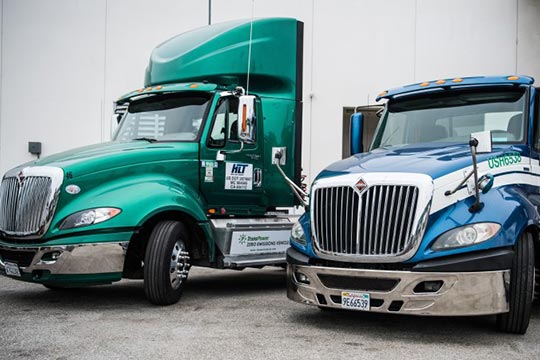
Breakthrough Analysis Finds Electrified Heavy-Duty Vehicle Powertrains Could Provide Lower Total Cost of Ownership
A new total cost of ownership study from NREL finds that battery electric and fuel cell commercial electric trucks could be economically competitive with conventional diesel trucks by 2025 in some operating scenarios. The research leveraged NREL's Transportation Technology Total Cost of Ownership modeling framework to evaluate six leading powertrain technologies to quantify the total cost of ownership of different truck options and identify operating scenarios where each technology may have an economic advantage. This comprehensive comparison across technologies represents significant coordination across the U.S. Department of Energy (DOE) Office of Energy Efficiency and Renewable Energy's Hydrogen and Fuel Cell Technologies Office and Vehicle Technologies Office and leverages total cost of ownership studies developed by other DOE national laboratories.
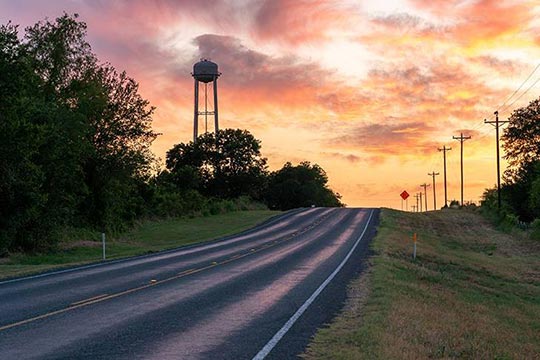
Country Roads, Take Me Home—In an Electric Car
NREL is helping small towns across America expand affordable, convenient, and energy-efficient transportation choices. In partnership with select rural communities, researchers are building knowledge of regional travel patterns and priorities, analyzing transportation data, and exploring the effectiveness of new transportation options. For example, a recently launched on-demand ride service in Bastrop, Texas, uses electric vehicles to meet passengers' mobility needs, allowing riders to request service via a phone call or mobile app. Such projects make it possible to level the mobility playing field for smaller rural communities, giving them access to services previously only found in urban areas.
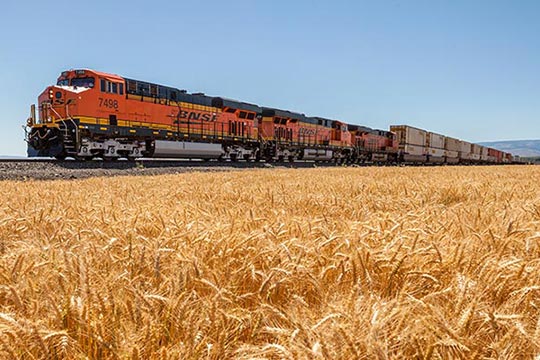
New Software Puts Rail Freight on Express Track to Net-Zero Emissions
The United States has the largest rail infrastructure network in the world. Rail freight is relatively efficient and clean, on average roughly 75% less carbon intensive than moving freight over roads. NREL is collaborating with leading industry and research partners on a new modeling framework that can be used to analyze and plan net-zero-emission and hybrid freight train systems. Soon, Advanced Locomotive Technology and Rail Infrastructure Optimization System software will offer the first fully integrated package to optimize deployment of locomotive technologies, railway energy supply infrastructure, and train operating practices for cost-effective deep decarbonization.

Energy Resiliency Plan Improves State Emergency Planning
When events such as tropical storms disrupt a state's primary supply of gasoline and diesel, access to fuel for evacuation and recovery efforts is restricted or completely unavailable. By developing systems that rely on alternative fuels such as compressed natural gas, propane, and electricity, emergency fleets are better equipped to react to, and recover from, natural disasters. Florida's Transportation Fuel Resilience Plan will help the state better leverage alternative fuel vehicles when hurricanes cause shortages of gasoline and diesel. Read more about the plan and alternative fuels in extreme weather scenarios.

Modeling and Analysis Inform COVID-19 Mobility Impacts and Vaccination Site Planning
A mobility modeling and analysis effort has identified pandemic-related travel changes and informed regional vaccine administration site planning. Researchers employed two new metrics to quantify behavioral shifts in driving as a function of time, enabling comparisons before and after the pandemic began. Meanwhile, a new model enables timely predictions of inbound traffic volumes from any domestic airport. Such analyses can inform national responses to critical events. Researchers also quantified the relative ease of accessing certain vaccine administration sites in the Denver area. These efforts could be scaled up to help inform regional or national vaccination pushes.
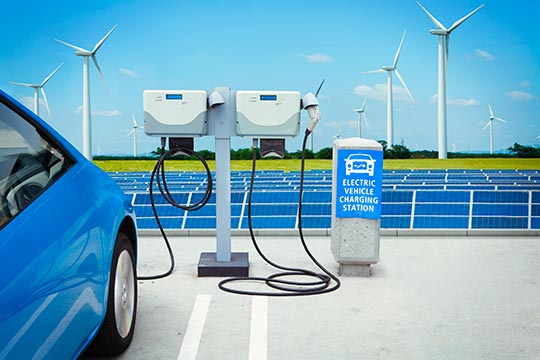
Charging Infrastructure Analysis Aims To Help California Meet Zero-Emission Vehicle Goals
NREL helped the California Energy Commission pinpoint the number of electric vehicle chargers needed to meet the state's ambitious zero-emission vehicle and greenhouse gas reduction goals. NREL's infrastructure analysis, which focused on light-duty vehicles, suggests that nearly 1.2 million chargers may be necessary to support 8 million zero-emission vehicles. This work leveraged the Electric Vehicle Infrastructure – Projection tool, which uses detailed data on personal vehicle travel patterns, vehicle attributes, and charging station characteristics to estimate the quantity and type of charging infrastructure needed to support a given demand.
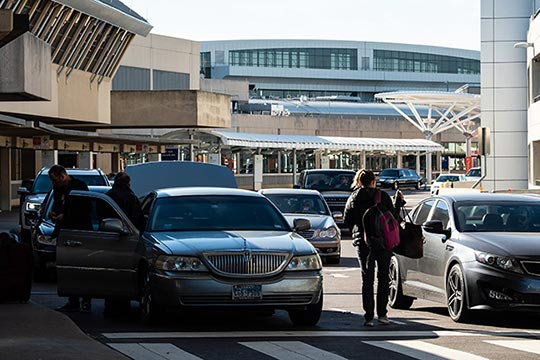
Digital Twin Informs Long-Term Investments at Major Airports
NREL and Oak Ridge National Laboratory researchers are providing complex transportation hubs with decision support and actionable insight through Athena, a collaborative multiyear research effort funded by DOE's Vehicle Technologies Office in partnership with Dallas-Fort Worth International Airport and industry. The Athena team recently published a series of three journal articles sharing key results of how it leveraged DOE's powerful scientific computing capabilities to model current and future scenarios at Dallas-Fort Worth—one of the world's largest airports to achieve carbon-neutral status—as it continues to seek new ways to reduce carbon emissions.
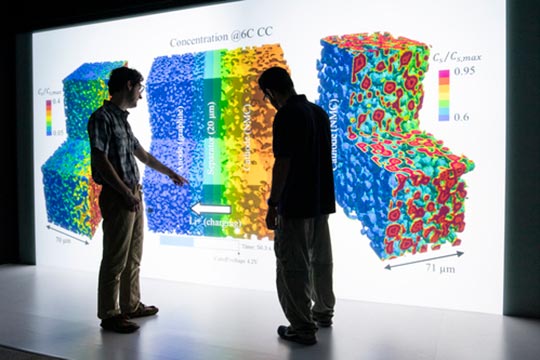
Microstructure Analysis ToolBox Changes the Game for Heterogeneous Material Modeling
Microstructure-scale modeling carried out by NREL over the past 5 years has culminated in the newly released, open-source Microstructure Analysis ToolBox (MATBOX) dedicated to the meshing, numerical generation, segmentation, and characterization of three-dimensional heterogeneous materials, such as battery electrodes. MATBOX leverages the existing MATLAB computing platform and a sophisticated graphic user interface to understand the link between lithium-ion battery electrode microstructures and performance. With its ability to support both microscale and macroscale modeling, MATBOX's impact surpasses electrode research to transform the field of heterogeneous materials analysis.
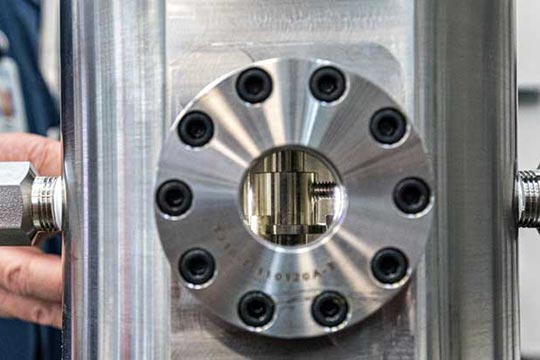
Breakthrough Methods Help Integrate Renewable Hydrogen With Waste Carbon Dioxide To Produce Low-Carbon Fuels
Wind, solar, and battery storage appear to be a winning combination for clean electricity systems, but to make the leap to a sustainable energy system, another ingredient is necessary—low-carbon fuels. With continued cost reductions for renewably generated electricity from sources like wind and solar systems, NREL is validating utility-scale hydrogen-production processes that could provide tomorrow's clean fuels and chemical feedstocks to produce low-carbon, high-value products.
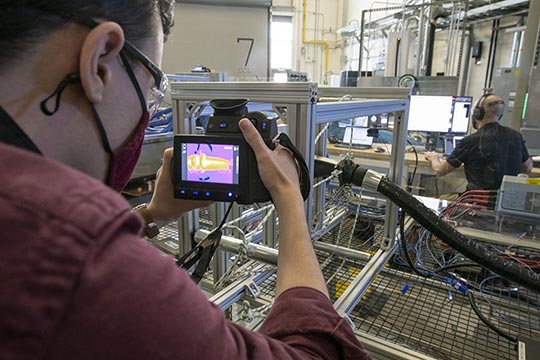
Industry Experts, Researchers Put Megawatt Charging Systems for Electric Trucks to the Test
Following last year's high-power charging connector evaluation event, NREL co-hosted a second round of charging system evaluations at its Electric Vehicle Research Infrastructure evaluation platform. Manufacturers evaluated interoperable designs for prototype vehicle inlets and charger connectors based on proofs of concept evaluated last year. This evaluation series provided the opportunity for researchers and industry participants to explore the technical merit of different equipment parameters pertaining to the new Megawatt Charging System standard, which will facilitate charging capacity up to 3.75 MW.
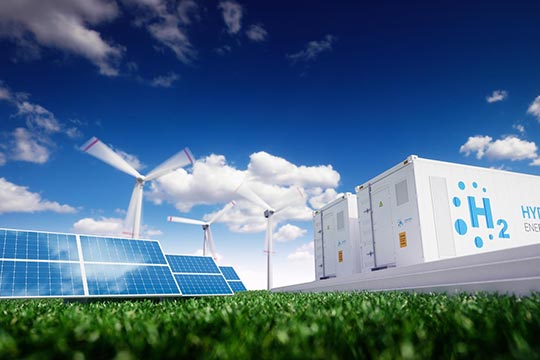
New Financial Analysis Tool for Long-Duration Energy Storage in Deeply Decarbonized Grids
NREL researchers recently developed a rigorous new Storage Financial Analysis Scenario Tool (StoreFAST) model to identify potential long-duration storage opportunities in the framework of a future electric grid with 85% renewables penetration. StoreFAST analyzes both energy storage systems and flexible power generation systems on a side-by-side basis to provide insights into the levelized cost of energy, financial performance parameters, and time series charts. A recent Joule article identified clean hydrogen systems with geologic storage and natural gas with carbon capture and sequestration as the lowest-cost options for long durations of energy storage.
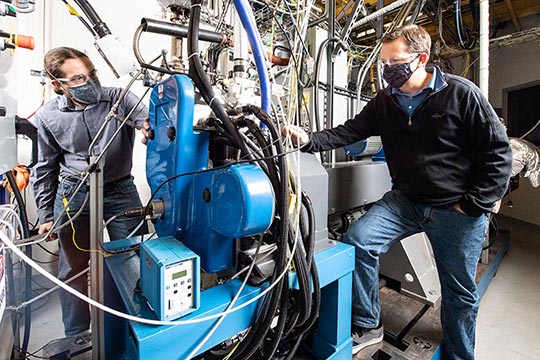
Low-Carbon Diesel Blends Reduce Emissions
A new report from the DOE Co-Optimization of Fuels & Engines (Co-Optima) initiative identifies potential big gains for big rigs and the environment by creating low-carbon renewable diesel fuel blends for use in truck engines. Researchers pinpointed 13 blendstocks that slash the carbon content of fuels, with the potential to reduce greenhouse gas emissions by at least 60% as well as be produced at a competitive cost and decrease vehicle operating expenses. Read the Co-Optima report Top 13 Blendstocks Derived from Biomass for Mixing-Controlled Compression-Ignition (Diesel) Engines.
Get To Know Our Team: Jeff Gonder

A conversation with NREL's Jeff Gonder, manager of the transportation applications and data analysis group.
What is your primary research focus at NREL?
My primary research interest lies at the intersection of advanced powertrain technologies and evolving mobility options such as ride-hailing, micromobility, and connected and automated vehicles. Modern mobility—the way people get from Point A to Point B—is progressing beyond the traditional realm of single occupancy in a conventional vehicle.
While working on a project a few years after I started at NREL, I was struck by the significant variation on energy use caused by the way a vehicle is driven. As we explore opportunities for connected and automated vehicles, we must consider how such technologies can save energy—by smoothing driving profiles or employing electric powertrains, for instance—but also how they can increase energy use—by inducing more travel, for example. As we create innovative mobility solutions, we must be mindful of fostering their development in the direction of minimizing the energy, emissions, time, and costs associated with transportation.
Another area of growing interest is telepresence, which is perhaps a silver lining that can be gleaned from the pandemic. People are getting better at conducting and participating in web meetings, using telepresence technologies instead of traveling across town or across the country. While I look forward to eventually seeing everyone back in the office, I've enjoyed the benefits of working from home, too. Working from home, even just part of the time, offers tangible energy efficiency as well as time benefits with fewer people commuting at the same time every day. Reduced traffic and less time on the road mean more time for other things.
In your field of research, what one mobility challenge do we need to prioritize in the next 5 years?
It's tricky to narrow down, but big picture, I'd say that getting well down the pathway to equitable decarbonization of the transportation system is of utmost importance. To a much greater degree than other energy sectors, transportation has largely relied on a single fossil fuel source (petroleum) for moving both people and goods. While we have begun seeing a small amount of progress in transportation energy diversification in recent years, I'd like to see substantial increases in this diversification over the next 5 years. Advanced powertrains enable us to use energy efficiently while also spurring greater diversification of domestic and ideally renewable power sources—electric vehicles use electricity; fuel cell vehicles use hydrogen.
What sparked your interest in researching sustainable mobility?
Growing up, I was always technically inclined toward the math and science fields. I studied engineering in college, but at first didn't have a specific subdiscipline in mind. As my college years progressed, I migrated in the direction of transportation and energy efficiency, recognizing that there was important work to be done. I didn't just want to earn a living; I wanted to do something meaningful. I was—and still am—passionate about working in a field where the problems are interesting and technically challenging but also relevant for making a positive difference in the world.
Why does sustainable mobility matter?
By definition, the alternative is unsustainable. I want my kids to inherit a world with sustainable pathways for getting around in a way that doesn't exacerbate climate change or other negative externalities from reliance on fossil fuels.
Must Reads
Calendar-Aging Research Crucial to Silicon Batteries
To understand the lifetime of a battery, researchers must consider the effects of both battery usage and time. However, calendar aging experiments are time-intensive. As a result, comparatively little is known about the time-dependent degradation of silicon-based batteries. In a new Nature Energy Perspective article, Calendar Aging of Silicon-Containing Batteries, battery scientists from the Silicon Consortium Project emphasize the importance of ongoing research into the calendar life of this anode material.
Heavy-Duty Truck Electrification and the Impacts of Depot Charging on Electricity Distribution Systems
What are the biggest obstacles to electrifying the heavy-duty trucking sector? Most would cite range, charging requirements, and battery densities as the biggest hurdles to electrifying this significant source of greenhouse gas emissions, but recent NREL-led analysis in Nature Energy, Heavy-Duty Truck Electrification and the Impacts of Depot Charging on Electricity Distribution Systems, would say otherwise.
Conditions for Ultimate Engine Efficiency
NREL-developed engine in-use heat maps show that high-frequency operating conditions vary significantly across multiple heavy-duty vehicle vocations, with only a few such conditions matching the engine efficiency “sweet spot.” Read more about it in the International Journal of Engine Research article Development of In-Use Engine Speed/Torque Heat Maps Across Multiple Heavy-Duty Commercial Vehicle Vocations.
Did You Know?
Driving EVs can save you money! Learn about EV ownership and how EVs stack up against gasoline-powered vehicles from these Clean Cities resources.
Electric Vehicle Basics fact sheet
With fleets as the primary audience, the fact sheet covers EV basics including EV models, charging, costs, and benefits. Look out for graphics that cover charging options, average emissions by vehicle type, and benefits of all-electric vs. plug-in hybrid vehicles.
At a Glance: Electric Vehicles brochure
For consumers, use this quick and easy brochure that covers why to consider an EV, costs, charging information, and maintenance questions.
In the News
Can We Run the World on Electricity?
BBC interviews Matteo Muratori
While electricity is a promising pathway to reducing our greenhouse gas emissions
in transportation, it will be most successful with support from clean hydrogen, biofuels,
and other alternative fuels and carbon-capture technology.
The ‘Hydrogen Olympics' Lit a Torch for the Clean Fuel's Future
Scientific American interviews Keith Wipke
Japan has long been working to build a hydrogen economy, which included elements
of the 2020 Olympic games. What are the benefits of hydrogen? Is it a feasible source
for the large amount of clean energy we need?
Why the Grid Is Ready for Fleets of Electric Trucks
MIT Technology Review interviews Brennan Borlaug
Is it better to halt progress to pursue perfection or move forward in uncertainty?
Even though grid technology is not yet perfect, studies suggest that short-range electric
trucks are relatively close to commercial reality. In the case of the climate emergency,
short-term solutions may be the best way forward.
Kansas City Streetlight-Mounted EV Charger Pilot Aims for Equity, Accessibility
Smart Cities Dive interviews Erin Nobler
To address the gap with EV charging for renters and people who don't own their home,
chargers that anyone can pay a fee to use are being installed on existing streetlights
in residential neighborhoods of Kansas City. This could be a solution to energy inequity
around the country.
There's an App To Save Fuel, and You Probably Have It
The New York Times interviews Jeffrey Gonder
Getting from Point A to Point B just got greener! Leveraging NREL's modeling and
analysis capabilities, Google developed new sustainability features in its Maps app
focused on helping drivers cut greenhouse gas emissions by taking the most fuel-efficient
route.
Share
